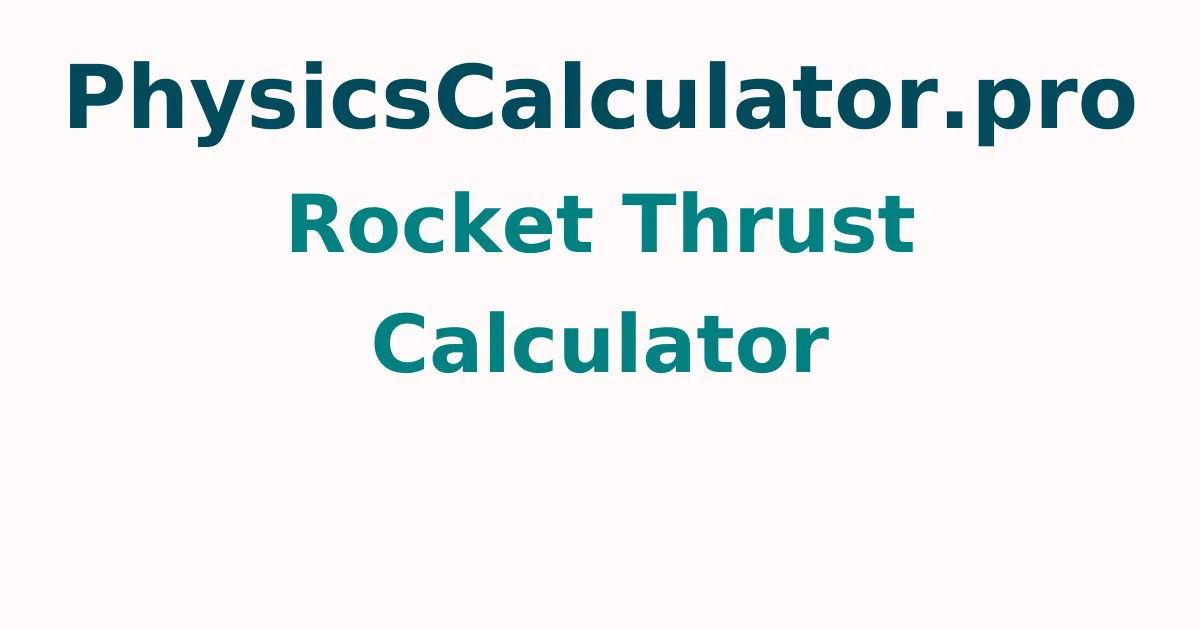Rocket Thrust Calculator
The rocket thrust calculator applies Newton's third law to determine net rocket propulsion, taking into consideration the difference in pressure between ambient and rocket nozzle pressure. Because the thrust formula is vehicle-agnostic, this calculator is used not only for rockets but also for any vehicle that uses a jet-rocket engine as its primary propulsion.
What is meant by Rocket's Thrust?
The force that propels the rocket through the air and towards space is called thrust. The rocket's propulsion system generates thrust by employing Newton's third rule of motion, which states that for every action, there is an equal and opposite reaction.
What gives rockets from their thrust?
Newton's third law asserts that for every action, there is an equal-and-opposite-direction reaction. This means that if you pull on a rope, it will draw you back with equal force. This is the fundamental concept behind rocket propulsion and rocket physics in general. The amount and pace at which the rocket nozzle's burnt fuel is emptied determine how rapidly the rocket accelerates and how much kinetic energy it gains. This is why a jet rocket engine uses a lot of fuel, but it's also how they're so powerful.
When building a jet rocket engine, the size of the rocket nozzle must be balanced against the rocket's body. Because of the characteristics of fluid and rocket physics, a smaller nozzle will cause the exhausted fuel to travel quicker but allow less of it to be exhausted per unit time, therefore it's crucial to create a rocket nozzle that's the right size for the intended rocket thrust. The relevance of the rocket nozzle area is represented by the variable A in this rocket thrust calculator; you can experiment with different sizes to see how they affect net rocket propulsion.
It can be quite useful to use this rocket thrust calculator in combination with the ideal rocket calculator to better understand how a rocket works, or simply to utilise rocket physics to conduct rapid calculations and examine how each variable affects rocket thrust, speed, and acceleration.
Find similar concepts related to physics all under one roof at Physicscalculatorpro.com and resolve all your doubts as a part of your homework or assignment.
FAQs on Rocket Thrust Calculator
1. How can you find out the rocket thrust?
This force is equivalent in size to the thrust force exerted on the rocket, hence Fthrust=vemt F thrust = v e m t, where all quantities are positive, as per Newton's third law.
2. On a propeller, how do you measure thrust?
The thrust (F) is equal to the mass flow rate multiplied by the velocity difference (V). The mass flow through the propulsion system is constant, and the value at the plane of the propeller may be calculated.
3. What effect does rpm have on thrust?
Mass flow, temperature, and efficiency all increase as rpm rises. As a result, near the top of the range, substantially more thrust is created per step of throttle movement than near the bottom.
4. What two elements determine how much thrust a propeller produces?
Additional blades are required as engine power increases in order to optimally utilize the increasing power. The amount of thrust generated is affected by the angle of a propeller's blades, as well as its overall size and form (together with the engine's power).
